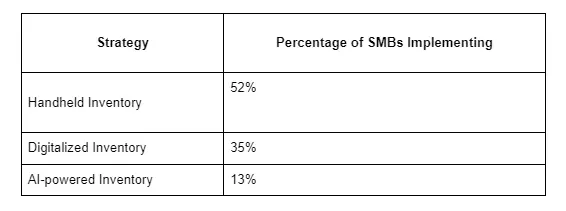Beyond Pixels: Understanding Computer Vision's Role in E-Commerce Evolution
In the digital age, the way we shop online is evolving. Let's explore the impact of computer vision on e-commerce. It revolutionizes the way we see and buy products online. Join us as we go "Beyond Pixels" to understand the pivotal role of computer vision in shaping the future of e-commerce.

Traditionally, we've heard that an image speaks a thousand words, yet in the digital era of e-commerce, its value goes beyond mere words. As technological boundaries extend, visual Artificial Intelligence (AI), specifically computer vision, is radically transforming online shopping. This transformation is not merely on paper. Leading e-commerce entities are actively integrating computer vision capabilities, mirroring an overarching shift in consumer trends and demands. Within this scenario, the influence of computer vision on e-commerce is profound.
Core Objective
Computer vision isn't merely the latest tech fascination; it's a pivotal force changing the face of e-commerce. This piece seeks to delve into this radical change, focusing on:
Key Contributions of Computer Vision to E-Commerce
- Advanced User Interface
- Accurate Product Alignment
- Customized Product Suggestions
- Streamlined Digital Asset Coordination
- Expert Image Refinement

Introducing Cameralyze
Where tech meets e-commerce, Cameralyze stands tall. As a leader in delivering sophisticated computer vision solutions designed for digital marketplaces, their services optimize business operations while elevating the customer experience. They redefine the digital shopping experience, making it more engaging, interactive, and pleasurable.
Recognizing the Role of Computer Vision in E-Commerce
Once an exclusive domain of tech enthusiasts, computer vision today is the torchbearer for pioneering e-commerce initiatives. Its swift ascent has solid foundations. E-commerce platforms prioritize visual content. Customers crave visual insights into their potential purchases, even in the absence of tactile feedback. Computer vision addresses this need. Through image and pattern analysis, it enriches the digital shopping journey, bridging any disparities between real-world and virtual shopping. A Forbes article highlights that enterprises embracing cutting-edge visual technologies gain a distinct competitive advantage.
The Value of Pristine Images in Digital Purchases
Images are not mere space-fillers; they serve as the chief instrument for online shoppers to assess their choices. Exceptional image quality cultivates trust and minimizes product return rates. Studies validate that lucid product visuals elevate sales and captivate user attention.
Computer Vision's Place in Digital Marketplaces
Keyword-centric product searches are becoming passed. Advanced computer vision tools, such as image recognition, empower customers to upload images and locate identical or akin products, revolutionizing purchase methods. This is especially prominent in segments like apparel and interior décor.

Automation Advantages for Enterprises
Computer vision goes beyond user experience enhancements. For companies, it introduces automation in various areas, ranging from product categorization to stockpile management. Such automation fosters efficiency, elevates productivity, and bolsters decision-making. The spectrum of computer vision's utility in e-commerce is vast. Spanning backend tasks to front-end customer engagements, its impact is undeniable.
Visual Exploration in E-Commerce

A noticeable change is apparent, as newer generations increasingly favor visual searches over classic text-driven ones. Research by eMarketer reveals an inclination towards embracing diverse technologies during shopping. Both sellers and buyers benefit—vendors experience reduced exit rates, while consumers achieve a more precise product match, heightening satisfaction.
Visual-Centric Product Suggestions in E-Commerce
Recommendation algorithms have graced e-commerce platforms for a while. But with computer vision, these suggestions go beyond mere buying histories or web surfing patterns. Current visual interactions guide these product recommendations. With an avalanche of visuals in the digital space, effectively managing and accessing these images on e-commerce sites becomes essential. This is where image annotation, powered by computer vision, enters the frame.
Imperative for Swift Visual Searches and Text Descriptions
Many e-commerce platforms house millions of product visuals. Swift and accurate classification and access to these visuals is crucial. Computer vision propels the automated tagging process, linking products with pertinent labels. This boosts search speeds and amplifies SEO endeavors. As per SEO Journal, image annotations and alternate text greatly affect search outcomes.
Advantages of AI-Infused Image Annotation
Traditional tagging can be cumbersome and error-prone. Computer vision delivers:
- Efficiency: Mechanized systems that annotate a plethora of images swiftly.
- Precision: Minimizing inaccuracies by discerning intricate details within visuals.
- Uniformity: Standardized labels across extensive inventories, ensuring a consistent shopping experience.
Cameralyze's Vision-driven Image Annotation Solution
Cameralyze distinguishes itself by providing a comprehensive solution for e-commerce platforms. With its evolved algorithms, it ensures images are aptly labeled, enhancing efficiency and enriching the user journey.
Image Annotation in Digital Content Management
Digital Asset Management (DAM) is a cornerstone of e-commerce, focusing on systematic cataloging, preservation, and retrieval. Computer vision augments DAM's capabilities.
Inventory Strategies of SMBs

Despite many Small to Medium-sized Enterprises (SMBs) still gravitating towards manual methods, there's a clear momentum towards digitized and AI-powered systems, attributed to their precision and operational efficiency.
Emphasizing Organized Product Catalogs
In digital commerce, a muddled product catalog can deter potential buyers. The lucidity and systematic arrangement of digital resources greatly affect purchasing actions, underscoring the pivotal role of structured product visuals.
Redundant product records not only perplex customers but also hamper stock management. Computer vision swiftly detects and remedies such overlaps, ensuring product directories remain immaculate.
Highlighting Image Annotation
Within DAM, image tagging isn't optional; it's imperative. Computer vision ensures:
- Relevant keywords are paired with product visuals.
- Efficient asset retrieval, optimizing both time and assets.
- Properly annotated visuals refine user experiences, smoothly guiding them to their sought-after items.
Perfecting Backgrounds in E-Commerce
Product image aesthetics hold an unquestionable sway in e-commerce. Immaculate, vivid, and professionally curated images often become the decisive factor for consumers. At the heart of this lies the expertise of background optimization.
Why Background Optimization Matters
In the digital shopping space, potential distractions can be costly. A mismatched or chaotic backdrop can misdirect a customer's attention, undermining the product's appeal. Background adjustments:
- Spotlight the Product: Ensuring undivided attention to the item.
- Elevate Professionalism: Neat image backgrounds symbolize professional acumen, fostering trust.
- Uphold Consistency: Uniform product visuals ensure a balanced browsing journey.
Clear product visuals don't merely enhance aesthetics—they influence purchasing decisions. Such clarity can amplify sales by up to 22%.

How Computer Vision Streamlines Background Editing
Computer vision technologies recognize product contours and shapes, seamlessly separating them from their backdrops. Such capabilities accelerate background editing, ensuring:
- Quick Turnaround: Expedited background removal and replacement processes.
- Detailed Edits: Recognizing even intricate product details, ensuring a flawless finish.
- Bespoke Adjustments: Adapting backgrounds based on product characteristics and category guidelines.
The Allure of Augmented Reality
With advancements in computer vision, Augmented Reality (AR) has fortified its position within e-commerce, enhancing virtual try-ons and product previews. From attiring oneself in the latest fashion trends to visualizing a couch in one's living room, AR brings a tangible element to the virtual shopping realm. Its role in revolutionizing the way consumers shop cannot be overstated.
Bottom Line
The e-commerce landscape isn't stagnant—it's continually evolving. Computer vision is a vanguard in this metamorphosis, influencing both vendor operations and consumer experiences. For forward-thinking e-commerce platforms, ignoring its profound impact would be a strategic oversight. The myriad applications, from image search to background removal, attest to the technology's versatility and indispensability. It's evident that businesses which fail to harness its potential risk being left behind in the competitive race.



